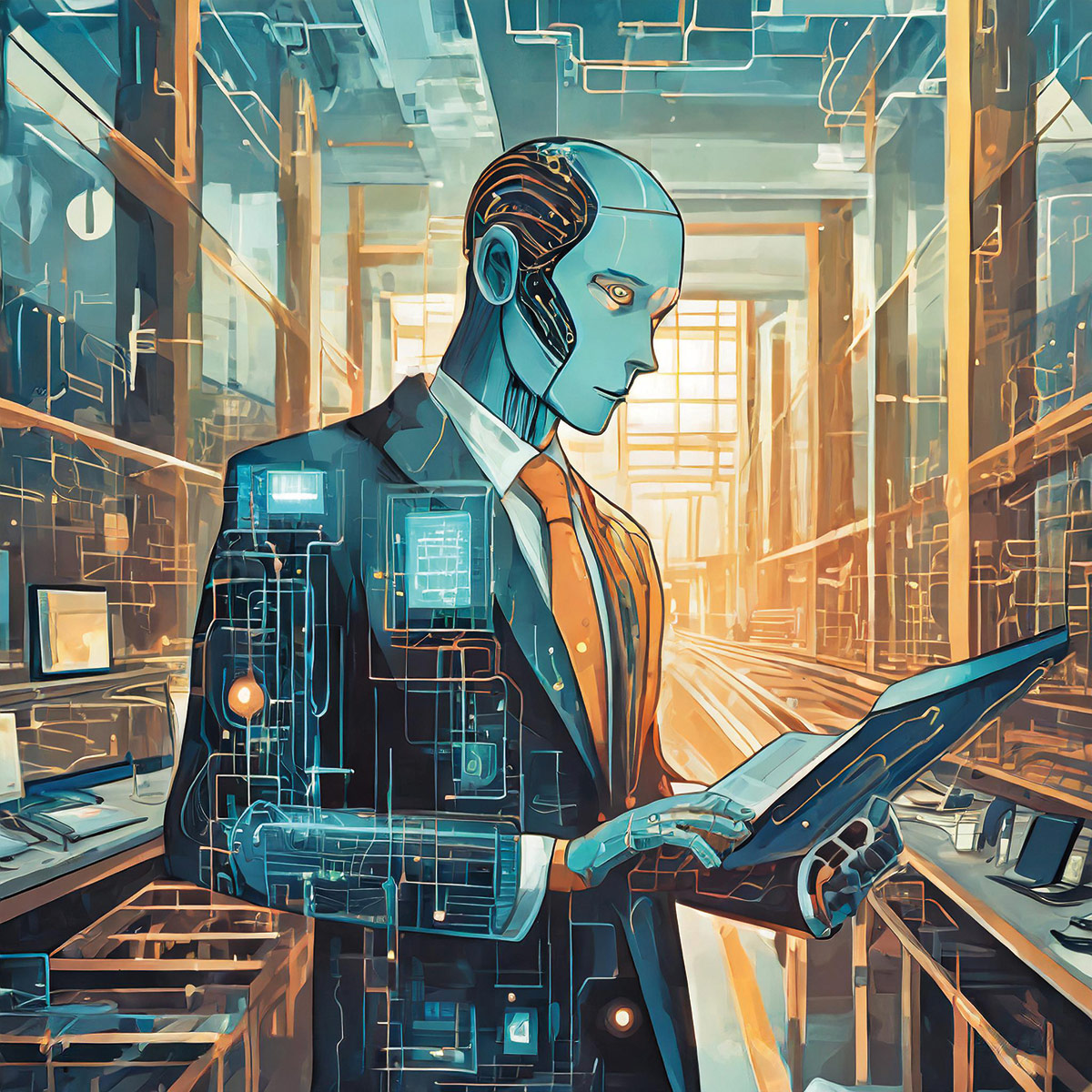lens
The Bots' Bottom Line
Mapping GenAI's growing impact on the business world
 This AI-generated image was created with Adobe Firefly from the prompt "how companies can harness the power of artificial intelligence to benefit their operations."
This AI-generated image was created with Adobe Firefly from the prompt "how companies can harness the power of artificial intelligence to benefit their operations."Within two months of its launch in November 2022, ChatGPT had some 100 million users monthly; today, the site attracts that many users weekly. Such rapid growth in generative artificial intelligence (GenAI) has triggered a primal instinct: fear for both companies and workers.
GenAI is a more creative version—for better or ill—than its traditional AI counterpart and able to produce original content from existing sources.
"Fear of being left out is a big motivator for businesses," said Case Western Reserve's Kalle Lyytinen, PhD, the Iris S. Wolstein Professor of Management and Design at the Weatherhead School of Management.
Portions of the labor force also feel anxious, because "the technology seems capable of doing things that appear close to what human professionals can do—at least in certain settings," said Weatherhead colleague Youngjin Yoo, PhD, the Elizabeth M. and William C. Treuhaft Professor in Entrepreneurship.
Think talked to Yoo and Lyytinen about how companies might employ GenAI and where to look for the next breakthrough.
What will be the most immediate impact of GenAI on businesses?
Lyytinen: Speed—especially for tasks where you don't expect truly creative performance—will increase. But GenAI doesn't replace, nor really constitute, true creativity. That human judgment aspect will remain.
Yoo: We did a study recently with a visiting doctoral student, running experiments using ChatGPT and [AI-powered image generator] Dall-E and measuring the creativity of the output. We found that the most creative outcomes came from users who are using these platforms almost like an improvisational tool—where the tool is taking you in a direction where you never thought you would go.
What will be the long-term impacts on workers?
Yoo: We have plenty of professionals who have been trained in a traditional way. But what happens in 10 years, when GenAI has changed the way we train people? Will there be no one with a deep expertise in software, engineering or writing? Will we be lacking people with a critical perspective and who can push the boundaries? To me, that is the long-term risk that our society's running into when it comes to adoption of GenAI.
How do you develop a proper business strategy for a technology that is developing so quickly?
Lyytinen: The only business strategy here is learning by doing. There will be a fair amount of failures in the next five to 10 years, and there will be some tremendous successes. We will probably learn at a relatively fast pace in the next few years what forms and uses of this technology are the really productive ones.
Yoo: A lot of companies are figuring that out through experimentation. But I would not trust anyone who says anything definitively about a business model or that they know how this is going to work out. I don't think we are anywhere close to finding the balance between humans and the technology.
What is the next frontier of GenAI?
Yoo: It will be hardware, not software. Most of the current chips were not designed to support AI and large language models. So if I were to make a bet about the next breakthrough in AI, it would be a chip that is optimized for GenAI and built from the ground up with different materials and potentially with a completely different architecture. Our university has an advantage in that sense because we have strong material science and chemical engineering programs. And these are the areas where I think future leaders should really invest if we want to have another innovation leapfrog.
— DAN MORRELL





